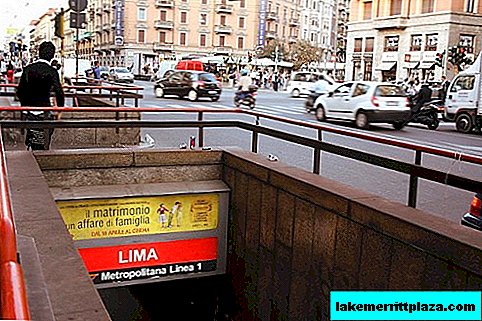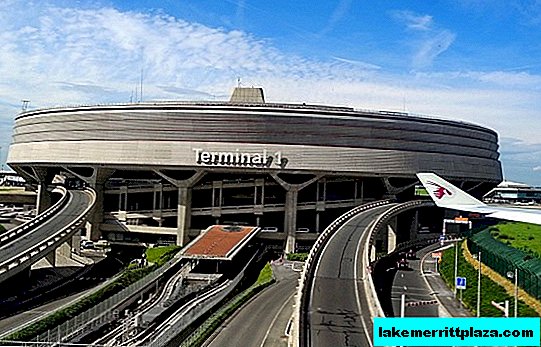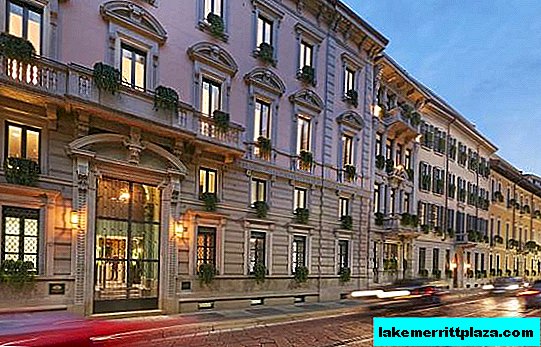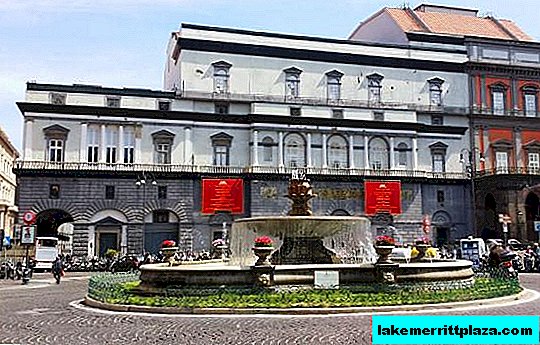Gallipoli (Gallipoli) - a small island in the Ionian Sea (mar Ionio), part of the administrative region of Puglia (Puglia). The island is connected to the mainland by a bridge, so the name of the peninsula is sometimes found. This is a favorite vacation spot for Italians coming to Gallipoli in August.
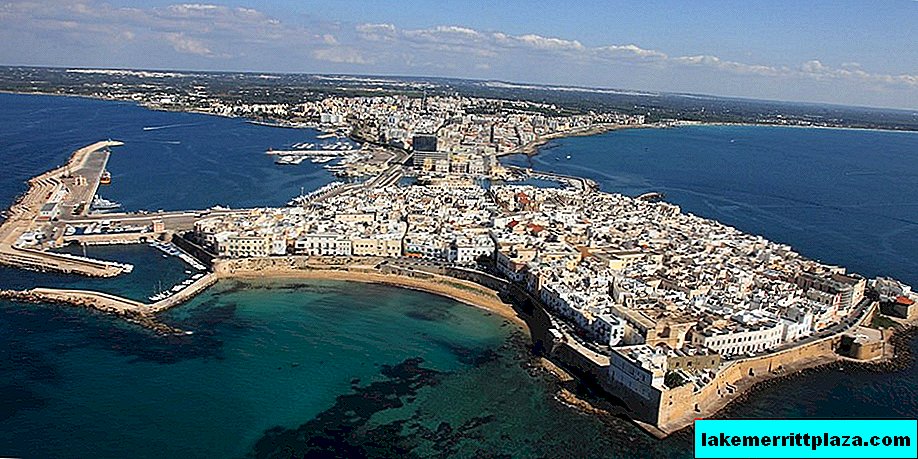
Story
Gallipoli, myths say, was founded by the Greek hero Idomeni, for a long time it was part of Ancient Greece (Grecia Antica). During the rise of the Roman Empire (L'Impero Romano) was included in its structure, and later would be absorbed by the Byzantine Empire (L'impero bizantino).
The Middle Ages was the period when the island passed from hand to hand:
- The eleventh century was a time of Norman rule;
- From 1268 to 1300, the city was ruled by Charles I of Anjou (Carlo I D'Angiò), after which Gallipoli entered the princely territories of Taranto;
- in the sixteenth century the island was conquered by Spanish troops, due to which these places were included in the Kingdom of Naples (Il Regno Di Napoli).
The island became part of the Italian Republic (Repubblica Italiana) since 1860.
Sights
The central quarters with narrow winding streets represent examples of Baroque architecture.
Here you can see old buildings, cathedrals and churches built in the period from the XVI to XVIII centuries:
- Church of St. Francis of Assisi (San Francesco d'Assisi);
- Cathedral and Monastery of St. Domenico (Di san Domenico al Rosario);
- St. Mary's Cathedral (Santa Maria della Purità);
- Palazzo Pirelli XVI century built, etc.
For the construction of most of them, local rocks of snow-white limestone were used. A distinctive feature of urban architectural masterpieces is decoration in the majolica technique, which reproduces the plots of sacred history.
St. Agatha Cathedral
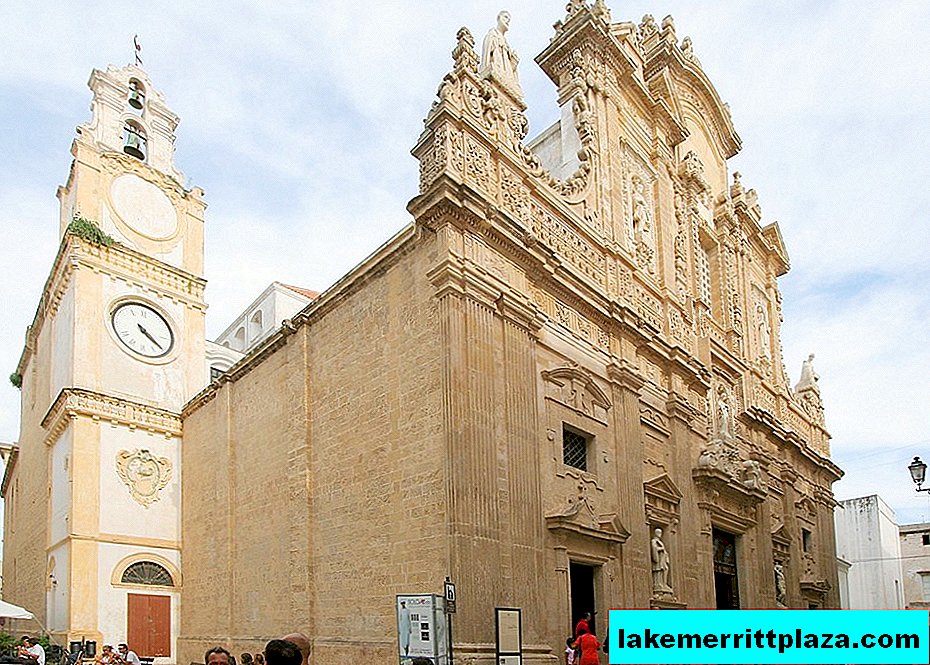
The works of artists from Salento and Napoli decorate the Cathedral of St. Agatha (Sant'Agata), built on the principles of Baroque architecture in the XVII century on the remains of the foundation of an ancient temple. It is famous for the sculptural images of saints revered in the city installed on the facade:
- Holy Agatha;
- Saints Faust and Sebastian (I santi Faust e Sebastian);
- Saints Marina and Teresa (I santi Marina e Teresa).
The cathedral has a three-nave cruciform shape.
Greek fountain
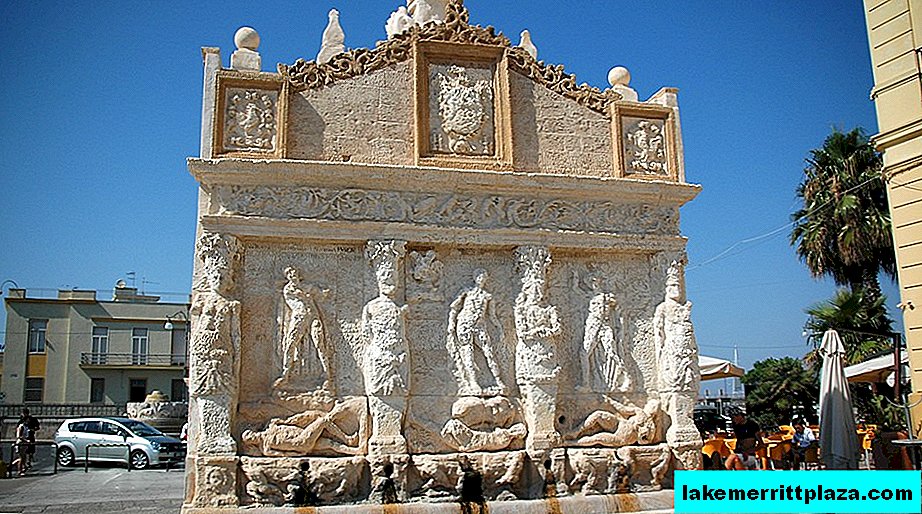
From the mainland, not far from the bridge connecting the island with the coastal part of the city of Gallipoli, there is a fountain built by ancient Greek masters in the 3rd century. BC. The fountain is decorated with bas-reliefs based on the famous "Metamorphoses" of Ovidio (Ovidio) with signatures in Latin. In the XVIII century the image of the coat of arms of the city appeared on the fountain.
Anjou Aragonese Castle

This is a well-preserved fortress Castello Aragonese e Angioino, built in the XIII century, during the reign of the Byzantine Empire. The name suggests that the citadel was rebuilt during the Aragonese and Anjou periods of rule. Now we can see one of the 12 fortified impregnable towers that existed in the 14th century.
Kitchen
A distinctive feature of the Gallipoli cuisine is the variety of fish and other seafood dishes:
- Mediterranean pasta;
- "Scapece" (scapece) - a dish that is fried, pre-marinated in saffron-vinegar dressing, small fish breaded from fresh bread;
- Deep-fried seafood, etc.

Original dishes from meat breaded in small pieces of fresh bread are popular. Fans of wine tasting do not ignore the local traditional Apulian pink and red wines: Negroamaro, Primitivo, Troia, etc.
- Read also: the best beaches of Italy
Hotels
Gallipoli has a wide selection of accommodation options, more than 450 offers marked with positive reviews. Many of them are located in beautiful rural areas, just a short drive from the central quarters of the city and within walking distance from the sea coast.
We recommend arriving in Gallipoli from April to mid-July or September-October.
3 stars
The main advantage of three-star hotels in Gallipoli is its location 100-300 meters from the sea.
Miramare hotel
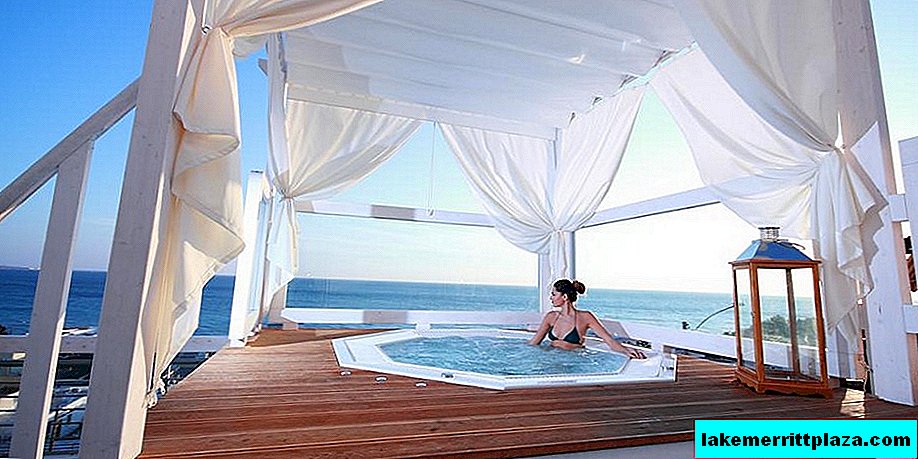
Miramare Hotel is located in the suburbs of Gallipoli - Lido Conchiglia, a 10-minute drive from the city center, and a 3-minute walk from the private beach area. Quiet and comfortable, the hotel invites you to rooms with all amenities, with a terrace, a swimming pool, a solarium, and private parking. The hotel has facilities for guests with disabilities.
Masseria L'Antico Frantoio
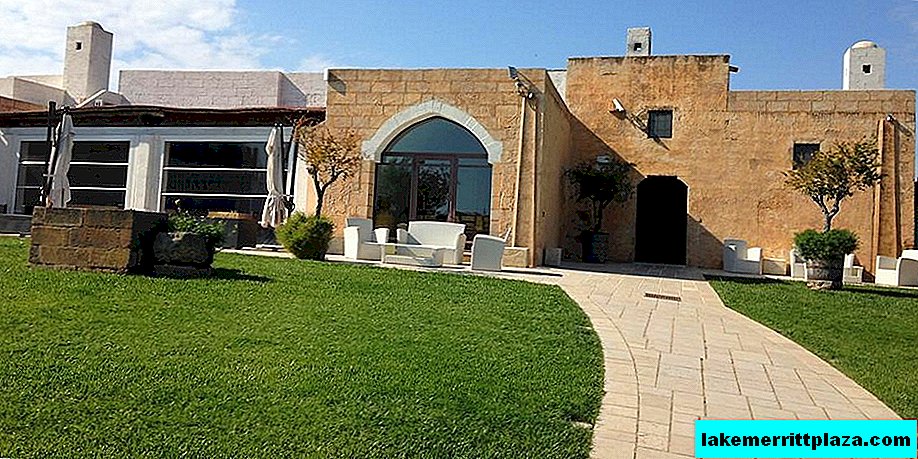
Masseria L'Antico Frantoio is 2 km from the city’s central quarters, and the coast can be reached in a calm 18-minute walk. The hotel is housed in an old 17th-century building amidst greenery of olives and thickets of spicy herbs and bushes. The rooms are decorated in the style of a country house, guests can use the cozy courtyards for relaxing and picnics. For guests, mini-bars, bathrobes and slippers are prepared in the rooms, and on the territory of the hotel there is a pool, sauna, SPA-center and massage parlor.
The hotel serves continental breakfasts (fried eggs, bacon, coffee, etc.) and dinners with local dishes and wines. The hotel accepts tourists with disabilities.
4 stars
4 star hotels provide comfortable living conditions and a high level of service. Guests can choose hotels on the first line or in the center of the ancient city.
Grand hotel costa brada

The Grand Hotel Costa Brada, located in the middle of the garden at a distance of 4 kilometers from the center of Gallipoli and 1 minute walk from the sea, has a free parking, a swimming pool, a sports center for fitness, a hall for table tennis, a playground for children’s games.
The cozy rooms are equipped with air conditioning, have balconies overlooking the sea. The restaurant serves European and Mediterranean cuisine.
Hotel bianco
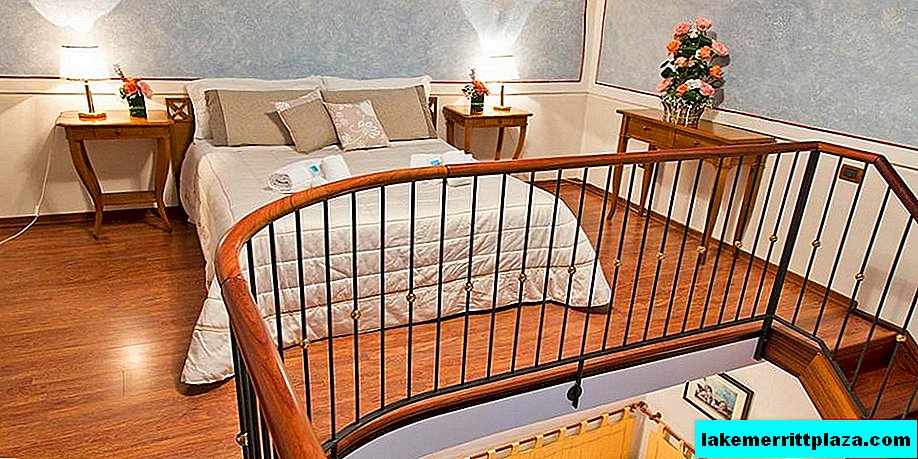
Hotel Bianco is located in the “old town” and a 12-minute walk from the sea coast. The roof is equipped with a terrace overlooking the city blocks and the Ionian Sea, guests can use the services of the SPA salon, relax in the pool.
The rooms are equipped with air conditioning, TVs, other household appliances, bathrooms are decorated with natural marble. Guests have a discount on the nearby beach, the hotel also offers services for organizing fishing, diving, canoeing, horse riding and cycling, excursions.
5 stars
The only 5-star hotel invites you to relax in the center of Gallipoli in a historic building of the 19th century and amazes with the luxury of rooms with vaulted ceilings.
Palazzo del Corso - Boutique Hotel
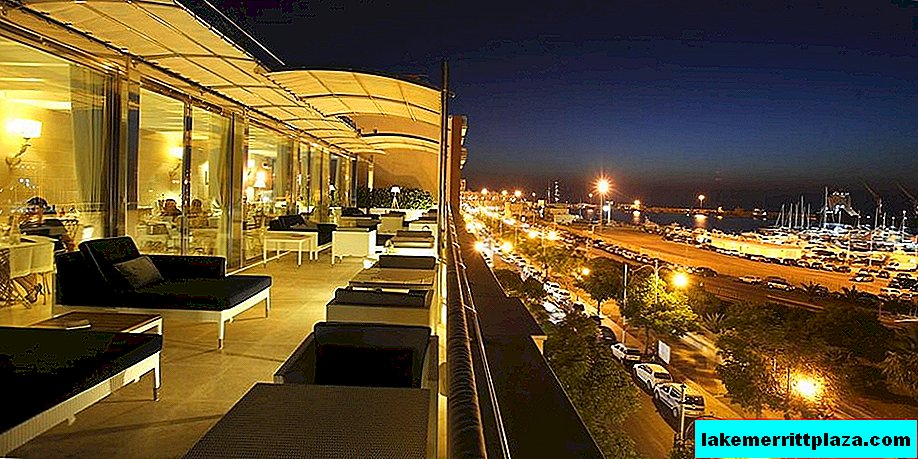
Hotel Palazzo del Corso is located in a trendy shopping district, 10 minutes from the sea with clean white sand. The spacious terrace offers views of the old town and the sea.
The comfortable rooms with flooring and wooden ceilings are decorated in a modern style, equipped with air conditioning, satellite TV.
The hotel has a SPA-center with jacuzzi baths, a swimming pool, a gym for fitness. All conditions are created for the relaxation of guests with special health abilities.
Apartments and B&B
The apartments invite couples with children, honeymooners, elderly tourists to relax in comfortable conditions within walking distance from the sea coast.
Palazzo gallo resort
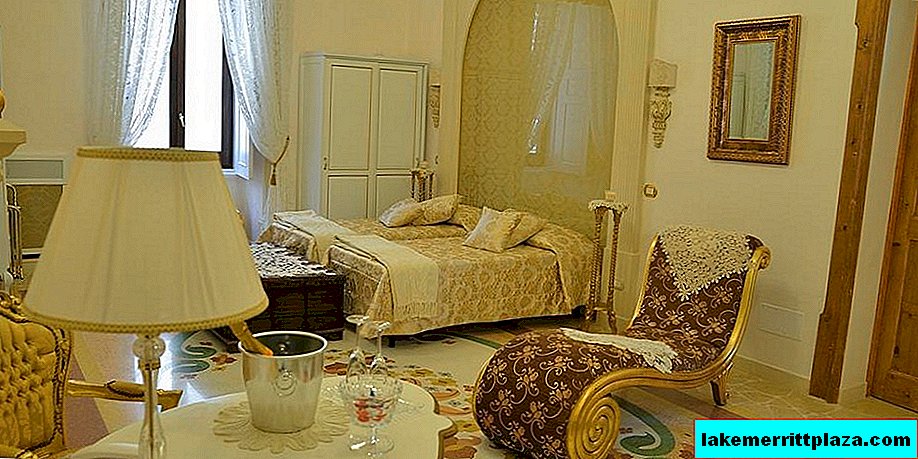
Palazzo Gallo Resort is located within the historic city center, just a 4-minute walk to the beach area. The rooms of vacationers expect antique rare furniture and spacious terraces. All the necessary conditions are created for vacationers with disabilities. Guests are offered a buffet breakfast. Vacationers receive discounts at one of the best restaurants on the coast, as well as in the SPA center.
The hotel offers car rental and sightseeing tours.
Bed & Breakfast La Cornucopia
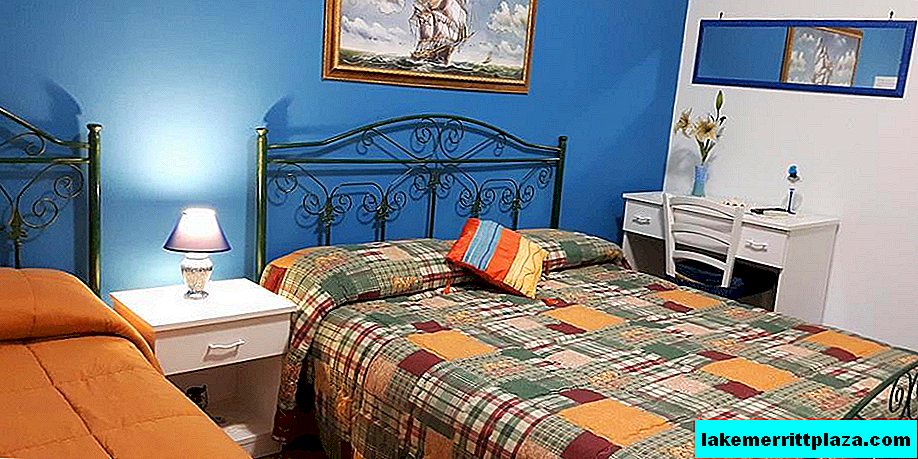
La Cornucopia Apartments welcome families with young children and pets in cozy rooms with air conditioning. The hotel has free parking, Wi-Fi is available throughout.
How to get there
An electric train from Lecce to Gallipoli island takes about an hour, and a ticket costs 4.6 euros. Transportation is carried out by the local company www.fseonline.it

Lecce can be reached by train from Ancona, Rimini, Bologna or Naples. Detailed information on timetables, transfer points and ticket prices can be found on the company's website www.trenitalia.com.

